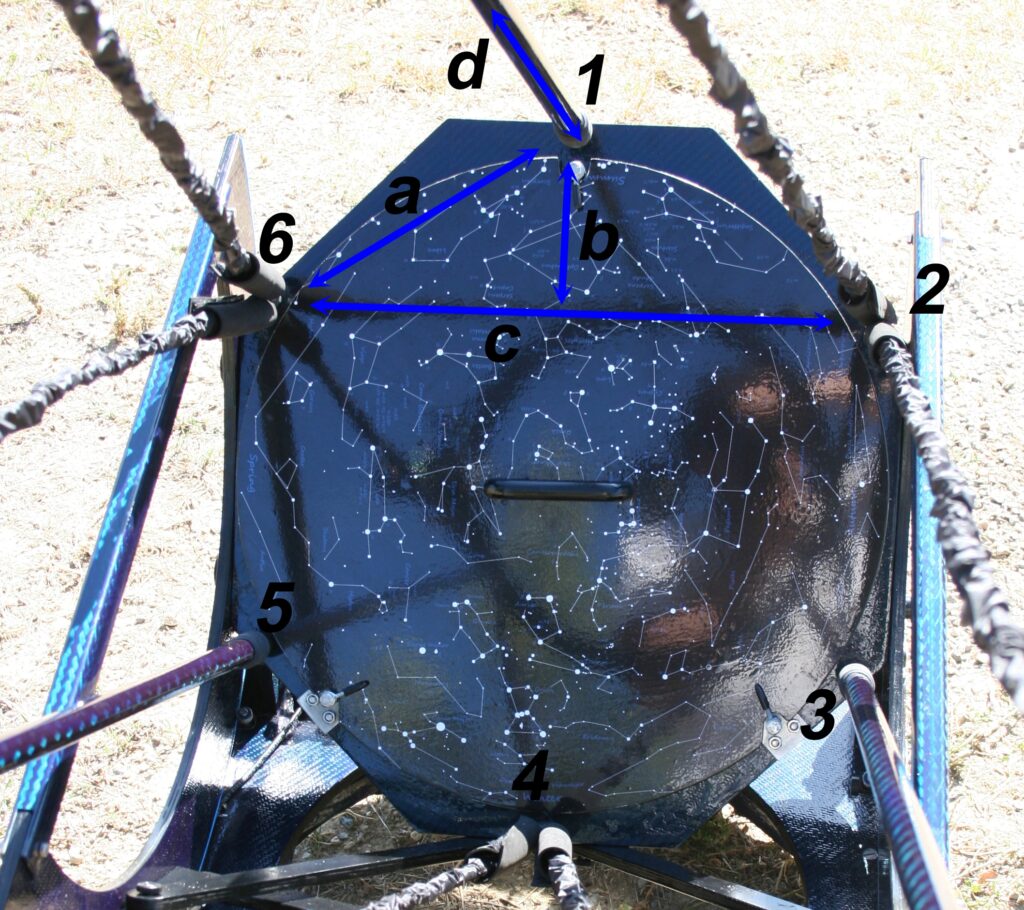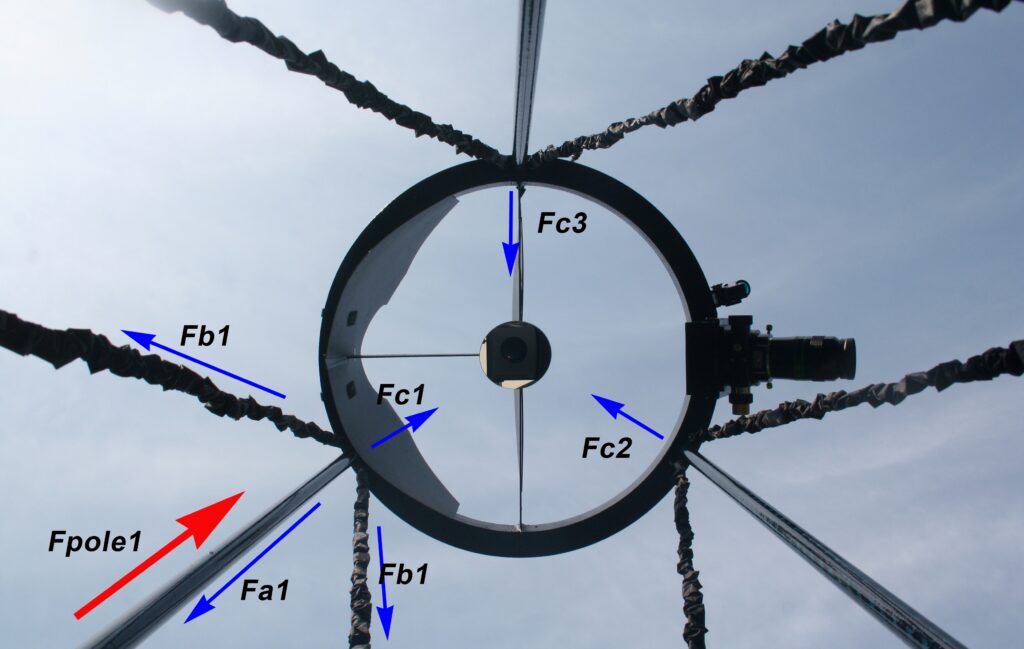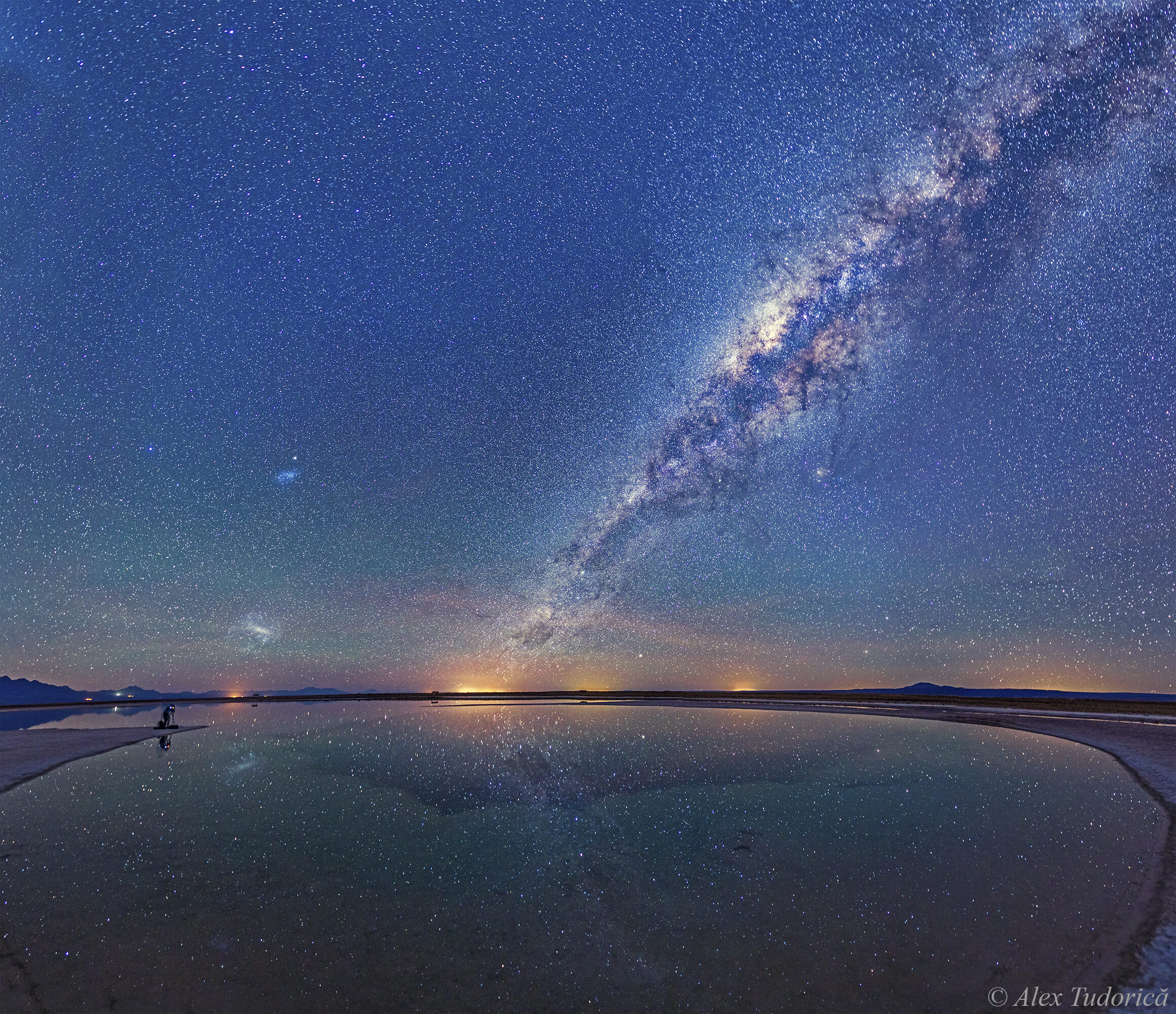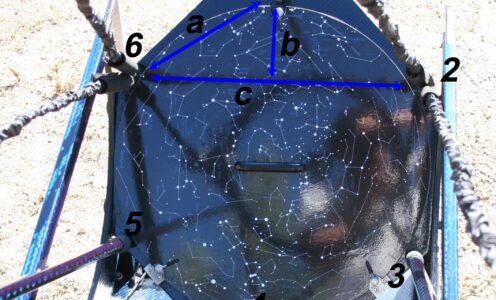<<<<Design
History
The concept of using strings in combination with poles as an alternative for a conventional truss design was conceived by Dan Gray in 1998. In the design of a 16 inch telescope he called Jane’s telescope[1], he used a combination of 6 strings and two spring-loaded poles. Since then several American ATMers have build telescopes using strings, ranging from 8 inch to a massive 41 inch[2], demonstrating that the concept works, even for large telescopes. Dan Gray used the string concept and the lowrider concept, to build his own 28 inch telescope in 2004. Dan Gray explains the concept like this on his website[3]:
“Imagine two strings anchored in your floor about 2 feet apart, and tied together about 5 feet in the air. Grab the knot with your finger, pull the strings taut, and now you can only move the string in an arc, forward and back, not left to right. Now make another pair of strings, and anchor them to the floor, 120 degrees apart from the first pair. Grab the knot with your other hand, and it also is only able to move in its own arc, 120 degrees from the first arc. Add a third pair another 120 degrees apart, and have your imaginary friend hold it at its knot, and it too has its own arc. Now tie the three knots together with a secondary cage, and now the only way to move the secondary cage is to slack a string. Keep enough tension on it, and it will stay in the same place relative to the floor. Now it should be easy to see how it would work on a telescope”.
Advantages Strings
There are several advantages to the use of strings over a 6 or 8 pole truss design:
- The use of strings saves weight in a crucial area of the telescope;
- A telescope with a string design can be setup much faster than a truss type telescope. You simply pick up the secondary ring, extend it, insert the poles and extend the poles upward (via springs or a screw mechanism);
- In theory no collimation of the secondary mirror is necessary thus allowing a fixed secondary. My telescope rarely needs collimation of the secondary mirror, but when it does the procedure is a little more cumbersome than with a normal secondary mirror setup. I would therefore advise builders against permanently fixing this mirror in place;
- A string telescope is less sensitive to wind than a truss telescope;
- A string design is easy to build, cost effective and fail proof. As far as I know there has never been a string telescope with broken strings.
Configuration
In the example Dan Gray described the use of 6 wires in pairs of 2 placed at angles of 120 °s. In his first telescope he used 2 poles and later favored 3 poles. Since Dan Gray’s first string telescope, amateurs have used a variety of strings/poles combinations. Most common is the 6 strings/ 3 poles combination, which I have used. But other combinations have been used, most notably the 8 strings/ 4 poles combination. Which combination works best depends on the design of the telescope. But there are a few characteristics of the string concept that lead to an optimum design:
- A large string angle[4] allows for a smaller required force to keep the string tight;
- Strings attached at tops and bottoms of the poles create less stress on the secondary ring and mirror box, thus eliminating warping;
- A lighter secondary ring facilitates a lower required force on the poles and wires;
- The concept requires the use of strings that do not stretch;
- Strings should be equally tensioned.
Characteristics 1 and 2 can be ignored to a degree when they are in conflict with the design of the entire telescope. In my design, which is used by most builders of string telescopes, I use 3 pairs of strings and 3 poles. The strings and poles converge to 3 points on the secondary ring and 6 points on the mirror box (see figure 4 and 5).
Figure 4 The bottom of the telescope

There are several reasons this layout is favored by builders of string telescopes.
Firstly, like the 8 strings/ 4 poles combination the strings converge to meet the pole at a common point on the secondary. This way the pull and push forces come together at one point on the secondary ring (see figure 6). This way the secondary ring does not need to be excessively strong. One does however need to keep in mind that force Fc (see figure 6) dictates a somewhat sturdy secondary ring and some sort of reinforcement were the strings meet the pole. Pushing a pole upwards with force Fpole results in a force Fb on a pair strings. This force Fb can be replaced by a force Fa (countered by force Fpole) and a force Fc. To calculate this Fc you need to measure (from drawing or on the telescope) distances a, c and d in figure 4. b can be calculated with the formula a2 = c2 + b2. Once b is calculated you can use following formula to calculate Fc:
Fc = Fb * b/d
In my telescope this translates to 10 kg * (132 mm/1634 mm) = 0.807 kg. This is a force that is easily handled by the carbon secondary ring.
Figure 5 The secondary ring seen from the lower end

A second reason ATMers favor the 6 strings/ 3 poles combination is that it allows you to place the strings and poles close to the light path of the main mirror. It is the best combination when you want to build a compact mirror box. And this is a key component for making a telescope as compact as possible. Again an 8 strings/ 4 poles combination could also facilitate a compact mirror box, but the string angle would be less than with a 6 strings/ 3 poles combination, which would mean putting more force on the strings and poles. In addition to that the extra pole and strings would constitute unnecessary extra weight.
Since there are six contact points on the mirror box there a greater forces put on this component than on the secondary ring. This downside to the string configuration is eliminated by building a sturdy mirror box. Because the mirror box does not need to be ultra light and needs to be sturdy anyway to protect the primary mirror, this is not a problem from a design perspective. I would however advise the use of aluminum profiles or carbon fiber when building a mirror box for a string telescope.
>>>>The Lowrider concept
[1] This telescope was build for a friend
[2] A rebuild of Dan Bakken’s Hercules http://www.bbastrodesigns.com/osp07/osp07walkabout.html
[3] http://www.siderealtechnology.com/28inch/
[4] The angle between two strings


